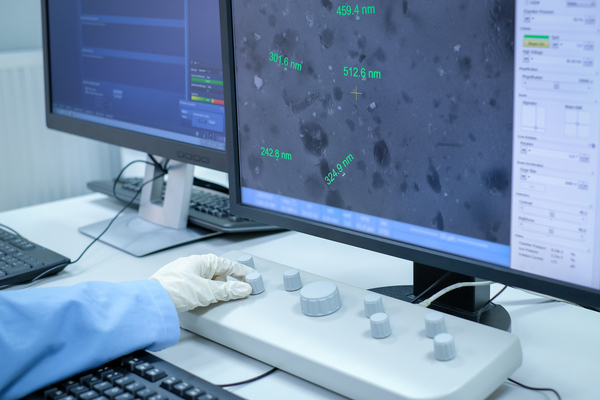Retrieval Augmented Generation (RAG) in AI

Łukasz Koczwara at STX Next explains why RAG is the foundation of an effective AI strategy
AI adoption is no longer the hallmark of a forward-thinking and innovative organisation. Instead, deploying this technology in some form has become the minimum requirement for businesses across industries, with recent research revealing that 82% of global companies are either using AI or exploring its capabilities.
As a result, successful AI integration has become about more than simply adopting these solutions, but pinpointing the exact pain points they can solve. Where organisations can set themselves apart is by developing a tailored and targeted AI strategy that boasts an abundance of helpful functions, while adding genuine value throughout their operations.
This is where Retrieval Augmented Generation (RAG) enters the picture: a technique that can transform a company’s approach to AI, from performative to truly effective. RAG’s potential is applicable across industries, but let’s focus on three specific sectors – energy, manufacturing and HR – to highlight some tangible use cases of this technology.
What is RAG?
In essence, RAG is a tool that combines the retrieval of relevant information with the generation of useful responses. Picture a super-smart assistant that can comb through vast quantities of data, pick out the relevant points, and then provide recommendations or create reports based on that data. That’s exactly what RAG does, serving as a behind-the-scenes AI hero.
Efficiency in the energy sector
The energy industry is a minefield of uncertainty and unpredictability which its incumbents must attempt to safely navigate, which is why it’s crucial they consider solutions that prevent them from being caught on the back foot.
RAG is a prime example of a resource energy companies can leverage to stay ahead of the game, allowing them to better utilise the data at their disposal, paint a clearer picture of probable outcomes, and allow them to shift from a reactive to a proactive approach.
Typically, the energy sector is capital-intensive: managing resources effectively can be the difference between success and failure. It can be a struggle to predict when machinery or equipment might fail, but RAG can analyse historical data and suggest maintenance before costly breakdowns occur. This leads to fewer disruptions and more trust in the stability of the energy supply.
RAG can also generate custom energy-saving strategies by examining vast amounts of consumption data, which helps companies reduce waste, save on costs and move towards a more sustainable operation. Similar technology can be applied to predict solar power generation capability and match it with historical customer demand data, integrating weather forecasts and real-time solar irradiance data.
Consistency, safety and development in manufacturing
The manufacturing industry is a prime example of one where AI deployment is widespread, but still some way from achieving its full potential: 91% of AI projects in the industry fail to meet expectations either in terms of benefits or time invested.
One area firms can target in the pursuit of more intelligent AI deployment is quality control, where manufacturers compare previous control values with current values. RAG systems can perform this process in real time on a massive scale, detecting anomalies and predicting potential defects before products leave the factory floor. As a result, firms ensure all products are of consistently high quality while reducing the volume of waste they produce.
Safety is another top priority in manufacturing, and the advent of RAG enhances the ability to assess risks with unprecedented precision. By sifting through safety reports, incident logs and compliance guidelines, RAG can alert management to areas of concern and help develop more effective safety protocols, minimising the likelihood of accidents. This includes comparing different procedures and providing evidence to explain why one procedure may be more effective than the other.
Training new employees is a significant pain point for manufacturers, typically taking up considerable time but with little effort made to tailor tutorials to each individual. RAG customises training materials based on job roles, current trends and individual learning progress, allowing firms to provide bespoke training at a fraction of the previous cost.
A new dawn for HR technology
RAG provides two essential benefits for an HR department: efficiency and accuracy. By automating data retrieval and document generation, RAG can save countless hours by ensuring that the disseminated information is both accurate and up to date. These capabilities allow HR professionals to focus on more strategic tasks, such as planning and employee development.
HR managers often get swamped with queries about company policies. RAG equips them with instant, accurate answers based on company documents and databases. This not only saves managers time but also reduces errors caused by misunderstandings or lack of information. Considering the importance and cost of maintaining management and employee trust, this is one of the most significant benefits RAG can offer to HR.
This technology can also support with performance reviews, which are far more effective when they include accurate details and facts supporting opinions and conclusions. This process often falls short without a system like RAG in place, because data collection and accuracy checks are slow, laborious, and typically need to be performed by more senior managers who have other priorities.
RAG solves this issue by quickly finding specific examples and supporting data from various sources. It generates consistent and insightful performance snapshots, ensuring that strong performers are rewarded, and weaker performers are proactively managed. This enhances both the quality and impact of performance reviews.
Finally, RAG is able to craft job descriptions and candidate communications, by extracting information on past successful candidates and current job requirements, and then generating documents that are always clear, concise, and relevant.
An industry-agnostic solution
The applications of RAG extend far beyond energy, manufacturing and HR, offering countless capabilities that organisations can leverage that will yield rapid returns.
Once steps are taken to fully integrate RAG across all processes, companies will be able to reap the rewards in terms of better efficiency and more consistent performance, while exploring other ways that AI can streamline their daily operations.
Łukasz Koczwara is CTO at STX Next
Main image courtesy of iStockPhoto.com and pcess609

Business Reporter Team
Most Viewed
23-29 Hendon Lane, London, N3 1RT
23-29 Hendon Lane, London, N3 1RT
020 8349 4363
© 2024, Lyonsdown Limited. Business Reporter® is a registered trademark of Lyonsdown Ltd. VAT registration number: 830519543





